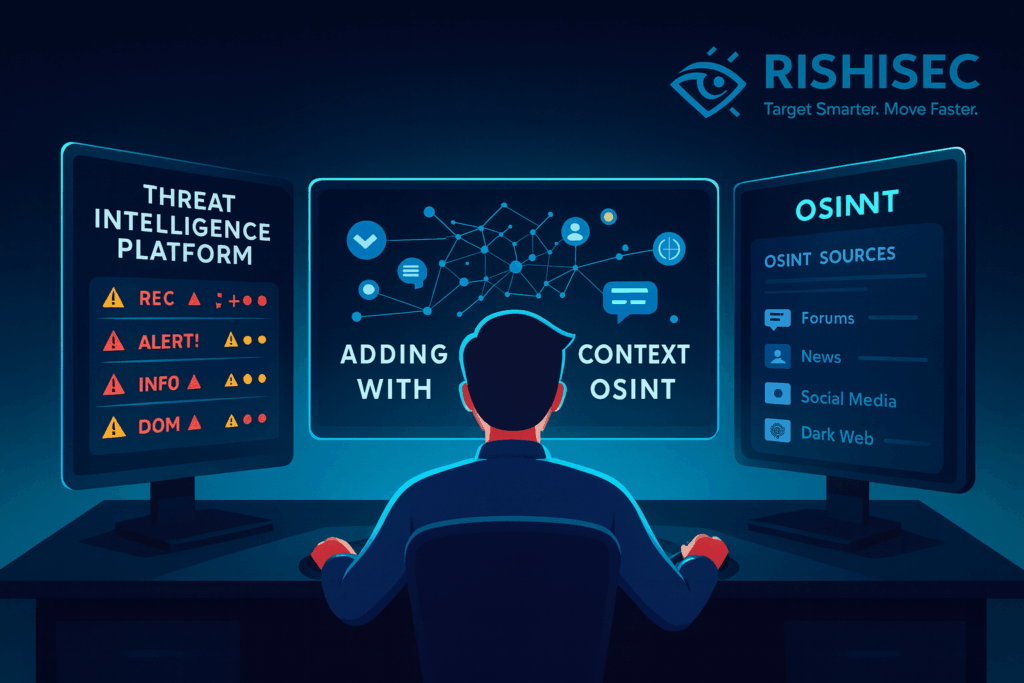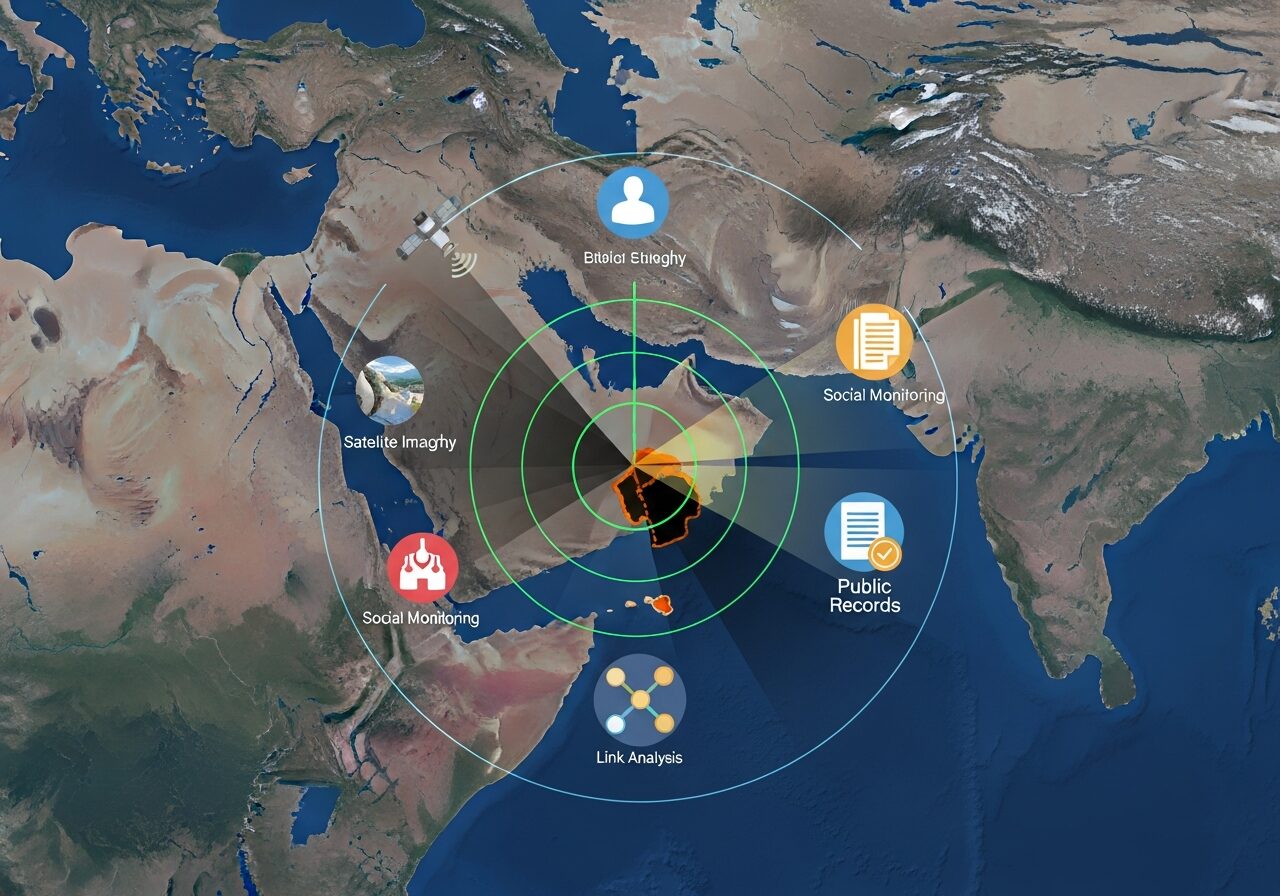Redefining Threat Intelligence: OSINT’s Critical Role in 2025
2025 Update
As of Q4 2025, cyber threats have surged in complexity and velocity. Ransomware-as-a-Service (RaaS) toolkits now include AI-generated decoys, and cross-platform influence campaigns are harder to trace. OSINT has become the linchpin of threat intelligence platforms (TIPs), with 76% of Fortune 1000 organizations using OSINT as a primary detection layer—up from 42% in 2023 (CyberEdge, 2025).
Modern TIPs now rely heavily on automated OSINT ingestion, NLP-based enrichment, and graph-based correlation to detect infrastructure overlaps, behavioral patterns, and disinformation campaigns.
AI-Powered Approaches in 2025
AI has moved from augmentation to orchestration in OSINT workflows. Leading platforms like Kindi now provide real-time enrichment, timeline analysis, and cross-platform entity resolution at scale. Key AI-powered OSINT capabilities in 2025 include:
- Kindi’s Automated Link Graphs: Detects cross-platform infrastructure reuse (e.g., shared IPs, domains, aliases) with visual navigation and analyst-ready context layers.
- LLM-driven summarization: GPT-4.5 tuned models summarize chatter across Reddit, Telegram, and dark web forums into threat actor profiles and campaign briefs.
- Behavioral fingerprinting: ML models cluster TTPs and linguistic patterns to identify emerging actors—often before IoCs enter commercial feeds.
- Sentiment and deception detection: Transformer-based models flag disinformation, honeypots, and false flag narratives across adversarial channels.
Recent Developments & Case Studies
In May 2025, a ransomware actor dubbed “GrayHatch” was identified through a combination of Reddit OSINT and Kindi’s AI timeline tool. The actor used a throwaway Reddit account to tease an upcoming campaign, which analysts correlated with Telegram leaks and Bitcoin wallet activity. Kindi’s entity resolution module linked aliases across three platforms, enabling early attribution before the payload was deployed.
Other notable developments:
- Kindi launched its Cross-Platform Correlation Engine, which maps actors across Reddit, Telegram, X, and dark web forums using AI-driven alias tracking and infrastructure mapping.
- Anomali added support for automated takedown recommendation based on OSINT-derived threat scoring.
- Recorded Future now integrates Reddit thread-level sentiment to boost context in nation-state APT tracking.
What’s Changed Since August 2025
- Reddit’s Role Expands: Monthly visits have grown from 1.2B to 1.9B. Subreddits like r/ThreatIntelLeak and r/InfosecOps are now key reconnaissance and leak vectors.
- Telegram OSINT Evolves: New invite-only channels use ephemeral messaging and burner botnets, requiring automation and AI to track continuity across pseudonyms.
- Decentralized Web Adoption: Threat actors are moving to IPFS, ZeroNet, and blockchain-based forums—areas where Kindi’s crawler modules now support enrichment.
- Regulatory Expansion: Canada’s DPPA and Singapore’s PDPA 2.0 now restrict passive scraping of PII from public platforms, requiring TIPs to use compliant OSINT methods.
Key OSINT Techniques for Threat Correlation
- Temporal Clustering: Grouping activity spikes across channels (e.g., Reddit, Telegram, BreachForums) to detect campaign planning cycles.
- Alias Linkage via Kindi: Mapping usernames, linguistic patterns, and reused infrastructure across platforms.
- Infrastructure Pivoting: Using domain/IP overlaps and DNS history to connect disparate indicators in attack chains.
AI + OSINT for Disinformation Tracking
Disinformation campaigns now exploit Reddit, X, and TikTok in tandem. AI classifiers trained on linguistic deception, emotional intensity, and coordination patterns are essential. Kindi’s disinfo detection model flags false campaigns by scoring posts against known state-sponsored narratives and synthetic media signals.
FAQ: OSINT-TIP Integration in 2025
- How to find deleted Reddit posts in 2025?
- Use platforms like Pushshift mirrors, ArchiveBox, or Kindi’s Reddit capture module, which snapshots high-risk subreddits in near real-time.
- Best AI tools for Reddit OSINT?
- Kindi, Maltego’s Reddit transforms, and OSINTgram’s GPT plugins are top-tier in 2025. They offer entity extraction, sentiment scoring, and threat clustering.
- How has Reddit moderation changed since 2024?
- Reddit now uses LLMs to auto-remove flagged content, but moderators often miss obfuscated threat chatter. OSINT platforms with NLP bypass filters via semantic matching.
- Can you attribute Reddit accounts to real identities?
- Attribution is possible using alias reuse, writing style analysis, and infrastructure correlation. Legal boundaries apply—use tools like Kindi for passive, compliant mapping.
- How to trace disinformation campaigns across platforms?
- Start with seed narratives on Reddit or Telegram, then use Kindi’s Cross-Platform Timeline to trace propagation patterns, actor aliases, and coordinated post bursts.
Internal Links to Explore
, 2025 Update,AI-Powered Approaches in 2025,Recent Developments & Case Studies,Key OSINT Techniques for Threat Correlation,AI + OSINT for Disinformation Tracking



